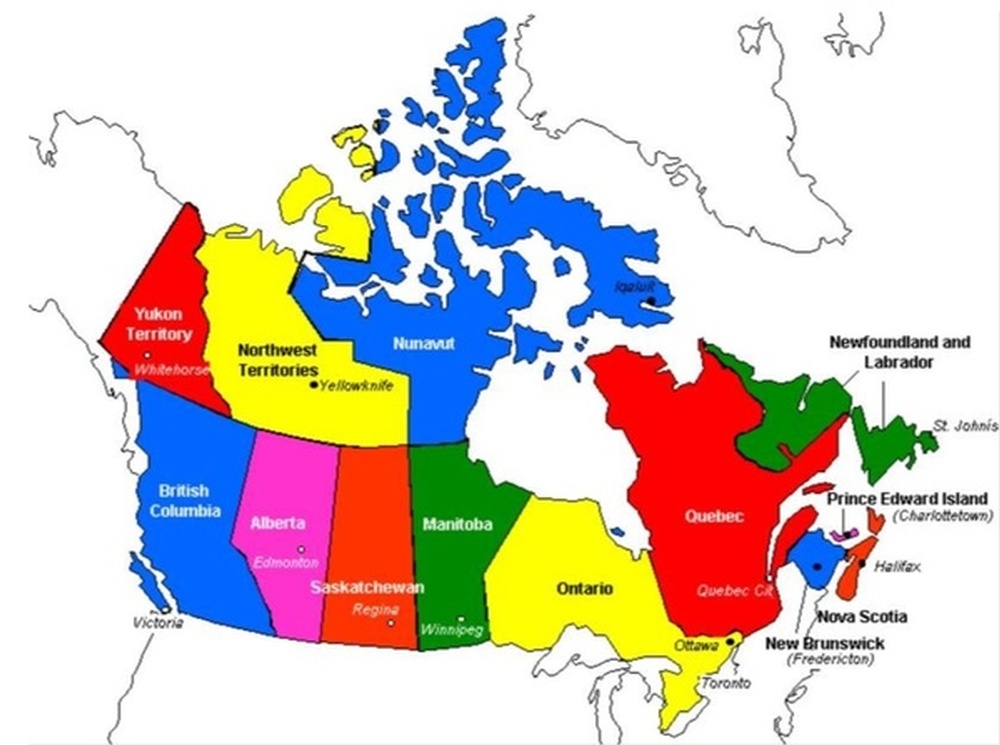With 10 provinces and 3 territories that make up the second largest country in the world, choosing the right province in Canada (whether you will be studying, immigrating, working, or starting a business) is one of the key decisions you will have to make. For general information, facts, and social welfare programs in Canada, please click on this link.
Canadian provinces each have their own culture, services, weather, landscapes, attractions, wildlife, and industries. Even if you have friends and family living in Canada, think about what you want your new life to be like, such as: do you want to live in a large, metropolitan city or would you be happier in a small town?
Canadian communities are diverse. If you have specific work skills, you’ll want to live in a place where you can best use them. Take time to consider other options, such as: climate, facilities, cost of living, health services, cultural activities, languages spoken, and community centres.
To help get you started on your journey, see below for a list of Canadian cities for your consideration.
Large Cities
Most newcomers to Canada settle in one of the country’s three largest cities:
- Toronto, Ontario
- Montréal, Quebec
- Vancouver, British Columbia
Medium-sized Cities
Medium-sized cities range in size from about 100,000 to 1 million people. Medium-sized Canadian cities from East to West include:
- St. John’s, Newfoundland and Labrador
- Halifax, Nova Scotia
- Québec City, Quebec
- Ottawa, Ontario
- Oshawa, Ontario
- Hamilton, Ontario
- St. Catharines, Ontario
- Kitchener, Ontario
- London, Ontario
- Windsor, Ontario
- Sudbury, Ontario
- Mississauga, Ontario
- Winnipeg, Manitoba
- Saskatoon, Saskatchewan
- Regina, Saskatchewan
- Calgary, Alberta
- Edmonton, Alberta
- Victoria, British Columbia
- Thunder Bay, Ontario
Small Cities
These offer most of the same public and private facilities as well as services found in the larger cities but with a lower cost of living.
- Sydney, Nova Scotia
- Corner Brook, Newfoundland and Labrador
- Charlottetown, Prince Edward Island
- Moncton, New Brunswick
- Trois-Rivières, Quebec
- Brandon, Manitoba
- Moose Jaw, Saskatchewan
- Red Deer, Alberta
- Kelowna, British Columbia
Living Outside Cities
Another option is to live in the suburbs or in the surrounding smaller cities and towns of the bigger cities or those within 60 to 100 kilometers. These areas will have a relatively lower cost of living, although still higher than living in any of the medium-sized or small cities in this list.
Canada’s rural areas offer wide open spaces and plenty of fresh air. Whether or not you can find public and private facilities, or shopping options in these areas will depend on how close you live to the nearest large town.
From an immigration perspective, the provinces that have smaller populations (and usually these are the provinces that have harsher climates) as well as the territories, have more lenient requirements for their immigration programs. If you want to know more about any of the immigration programs for any of the cities and provinces mentioned above, reach out to us so we can schedule your free consultation for 45 minutes. Prior to that, it would be best to get your profile assessed first, please click on this link.
We look forward to hearing from you.

